
Our planet is a hub for an overwhelming variety of living organisms. The diversity across the globe can be overwhelming to comprehend. Within this immense variety of plant life are some very useful compounds. These are utilised to treat disease and optimise general wellbeing.
Unfortunately, not all plants are beneficial for us.
I’m sure you know there are plenty of plants which can be extremely harmful to humans and animals. Today we are going to have a look at some of the plants that you need to look out for while travelling throughout the Philippines.
Buta-Buta – Also known as the Blinding Tree
Excoecaria agallocha
The name Buta comes from the Malay word meaning blind, which says a lot about the tree. Buta-buta is a tough plant that thrives throughout the mangroves of the Australasian region. The plant has a long history of use with the natives of the region. This includes using different extracts in traditional medicine and using wood for fuel and lumber.
But it isn’t the only thing that makes this plant famous. The tree produces a hot, milky liquid that is highly toxic. A few drops can cause your skin to blister. If any comes into contact with your eye, you may be subject to temporary blindness. As a result of this property, the plant is used in the manufacture of fish poison.
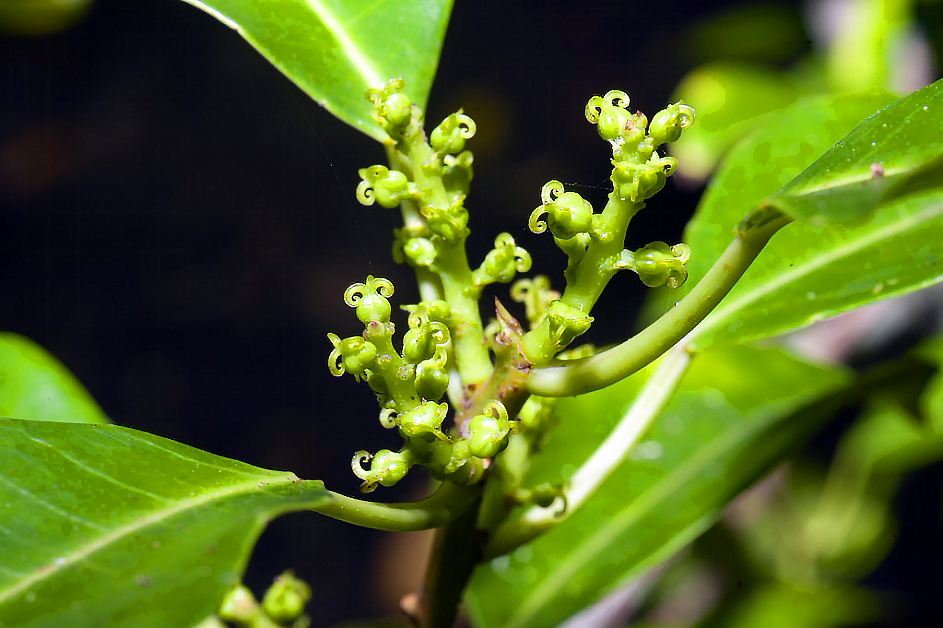
Talumpunay Tree
Datura metel Linn
The Talumpunay tree, also known as the Cachubong is a beautiful plant which has a notable trumpet like flower. The plant is found worldwide, more commonly known as the Thorn Apple. The beautiful flowers make the plant ideal for gardens throughout its native region in North America.
Now, you may be wondering how this plant made it to our list?
Well, it is well known that the flower of this plant will produce hallucinogenic properties when consumed. It was so commonly used that the PDEA released a statement warning of the dangers of consumption of the Cachubong. The plant is now found throughout the Philippines due to the popularity of the plant.
Although, consumption is not recommended, as there have been several deaths in North America linked to the plant. Our recommendation is to keep the plant exclusively for your garden.
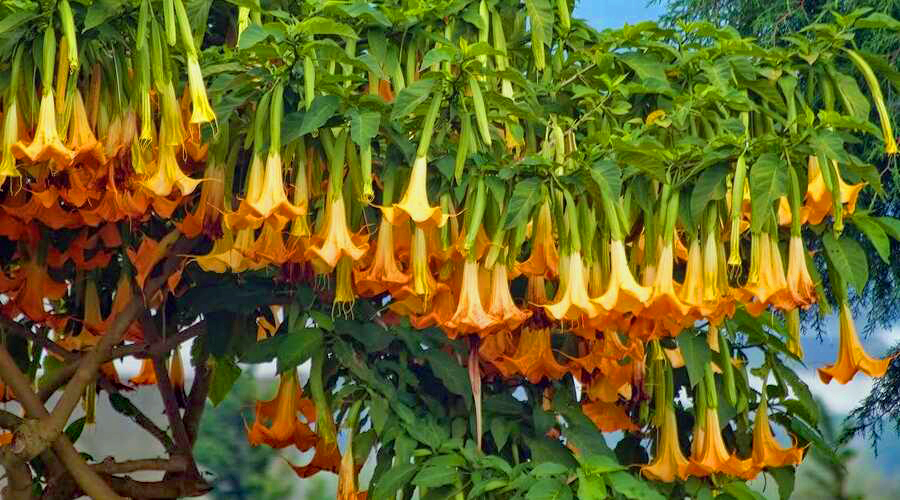
Dumb Cane/ Leopard Lilly
Dieffenbachia
The Dumb Cane, is a relatively benign plant compared to others. The Brazilian native is found across the globe as a staple houseplant, especially in the Philippines. Now, this plant would be completely fine, if it wasn’t for a little thing called calcium oxalate.
These calcium oxalates form needle-like structures called “raphides” which may be found throughout the plant. If the plant is accidentally eaten or simply mishandled, these crystals are released into the individuals’ system. This has the potential to produce severe discomfort and excruciating swelling of the mouth.
The juice of the plants was employed as poison in native Amazonian arrows because of its toxicity. This is because severe exposure can be detrimental to the victim, leading to breathing difficulties, loss of speech amongst other things.
Visit our page to learn more about the vibrant culture of the Philippines
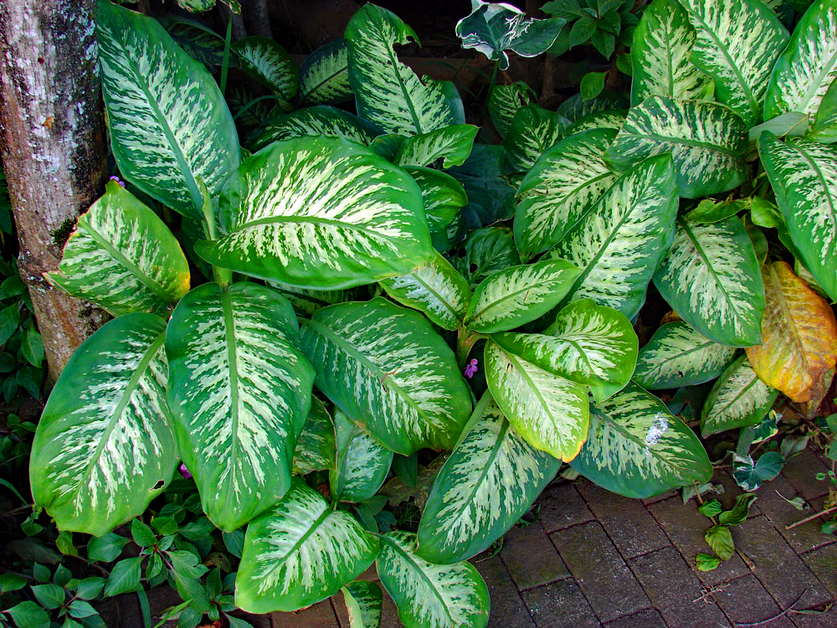
Rosary Pea
Abrus precatorius
The Rosary Pea, also known as the Jequirity Bean, is a herbaceous flowering plant in the bean family Fabaceae. It is a slender climber with long, pinnate-leafleted leaves that twines around trees, shrubs, and hedges. The plant is prominent in SEA nations such as Thailand and the Philippines but is found widely throughout Asia and Australia.
Its seeds are brilliant red with a single black spot, making them easy to recognise. These seeds have been used for percussion instruments, as well as for jewellery. It’s also worth noting that those same seeds are highly toxic If the seed were to be well chewed and ingested it can be fatal, this is due to a protein in the plant called abrin.
It’s so dangerous that as little as half a microgram may kill an adult human. People have died from pricking their fingers on the tip of drill bits used to drill holes in the seeds; thus, even utilising the seeds as beads should be carried out with caution.
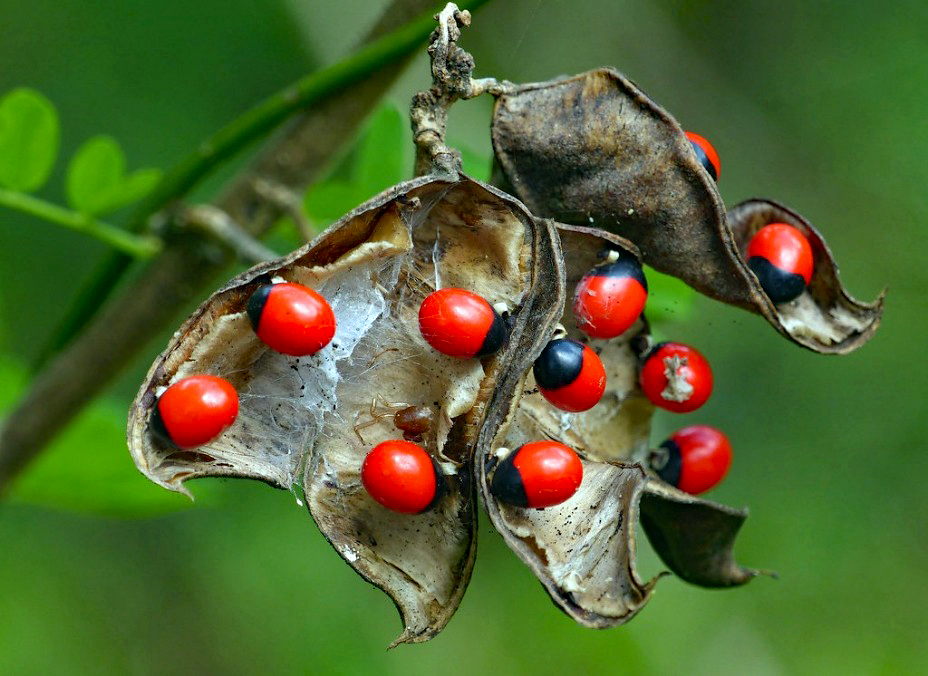
Castor Oil plants
Ricinus communis Linn
Known locally as Tangan-tangan the plant is utilised to treat various ailments through usage of the multipurpose Castor oil. The plant is now booming in Nueva Ecija, and its surrounds, its multiple uses makes it a valuable plant in the communities.
Despite the plants utility, it still is one of the more dangerous plants found in the Philippines.
The seeds of the plant have a bright red appearance, which make them quite attractive. They are also found in a capsule like structure similar to many other edible beans. Because of this, there is a propensity for people to try and eat the beans.
The problem is, they are so poisonous that just 4-5 seeds are enough to kill a fully grown adult. This is due to the presence of ricin, a poison present throughout the plant. Ricin is a carbohydrate binding protein, known as a lectin. It begins to inhibit cells from producing the proteins they need, which then causes them to die.
After eating the seeds, you may experience a burning feeling in the throat and tongue. This is often followed by diarrhoea and vomiting. The poisoning itself can not be treated, so medical professionals typically work to offset some of the symptoms, although poisoning frequently leads to the death of the victim.
Find out more about one of the most important plants in the Philippines
Wolfsbane
Aconitum Lycoctonum
Wolfsbane is a very visually appealing plant, which is common in the due to it assumed health benefits. You can find many people selling it online as a homeopathic or herbal medicine. Some people also grow it to use as a root vegetable, such as a group on the Qinling Mountains of China.
This plant which is found in the mountainous areas of the Philippines is widely known to be poisonous. All parts of the plant, especially the roots contain toxic substances, the most dangerous being Aconitine. This means before the plant is used for any implied health benefits, it needs to be treated to rid it of any toxins.
The Ainu tribe of Japan has utilised this poison on the points of their arrows. This was quite effective, as the symptoms of poisoning usually occur quite rapidly.
Now, I’m assuming you are wondering how a flowering plant received such a unique name like Wolfsbane? Well, it’s because the plant’s venom was formerly used to kill wolves, and panthers. Raw meat used as bait was often lacedwith Wolfsbane in order to catch wild animals. In the past.
Learn more about personal safety in the Philippines
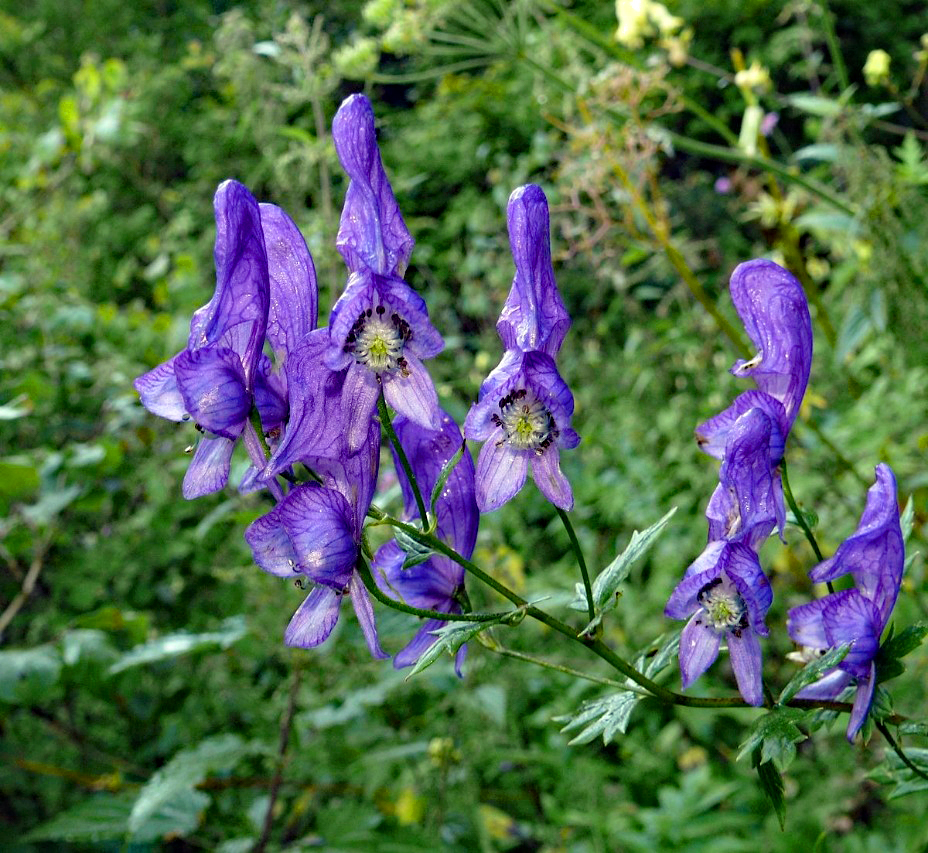
Taiwan/ Chinese Yew
Taxus sumatrana
This is one of many varieties of Yew found predominately throughout the Asian region. Online, you can find the plants for sale throughout the Philippines, although the plant mostly thrives in the mountainous regions of the country.
The small evergreen adds an interesting look to the garden, which makes it very popular. Despite this is one of the most deadly plants on the planet right now. At one point, people even thought sleeping under the tree was dangerous.
Like other plants listed here, this tree has also been used as a wartime poison, and for hunting animals. The main source of danger comes from the tree’s cardio toxic taxine alkaloids. These substances remain in the plant year round, even dried parts of the tree can still contain the alkaloids.
Due to the fast onset of symptoms after ingestion, often the first sign of toxicosis from the plant is the death of the victim. Due to the danger of the plant, and difficulty of treatment, it is recommended to keep the plant out of the reach of any pets and livestock.
Belladonna
Atropa belladonna
The Belladonna is known for its contradicting applications. The plant itself is known for being toxic, yet since ancient times the Belladonna has had medicinal applications. The name “Belladonna” or “Beautiful Women” comes from its Italian roots. Women would use droppers to add an extract from the plant to their eyes which would dilate their pupils, which was believed to make them more attractive.
Even though the extracts from the plant re widely used in the medical industry, the Belladonna is still a strong contender for the list.
Ingestion of a small portion of the berries, or leaves, are enough to be fatal for a human. The entire plant is toxic, but the berries are particularly hazardous, as many people, especially children, assume most berries are safe to eat. So, it is again recommended keeping this plant out of reach of animals.
Trompeta/ Angels Trumpet
Datura Arborea
The Trompeta is a new addition to the Philippines, the beautiful, drooping flowers make it hard to turn down. It is most commonly seen around Baguio in the ornamental gardens throughout the city, but can also been found in the lowlands.
Like other Datura on this list, this plant is a potent hallucinogenic, as well as being highly toxic. Despite the potency many shamans warn inexperienced individuals about experimenting with the plant.
The plant contains several alkaloids including atropine, hyoscyamine, hyoscine (scopolamine) and meteloidine. Poisoning can come from ingesting any of these alkaloids, which are at their strongest in the seeds and leaves. The smallest dose of these alkaloids is enough to be fatal to a small child.
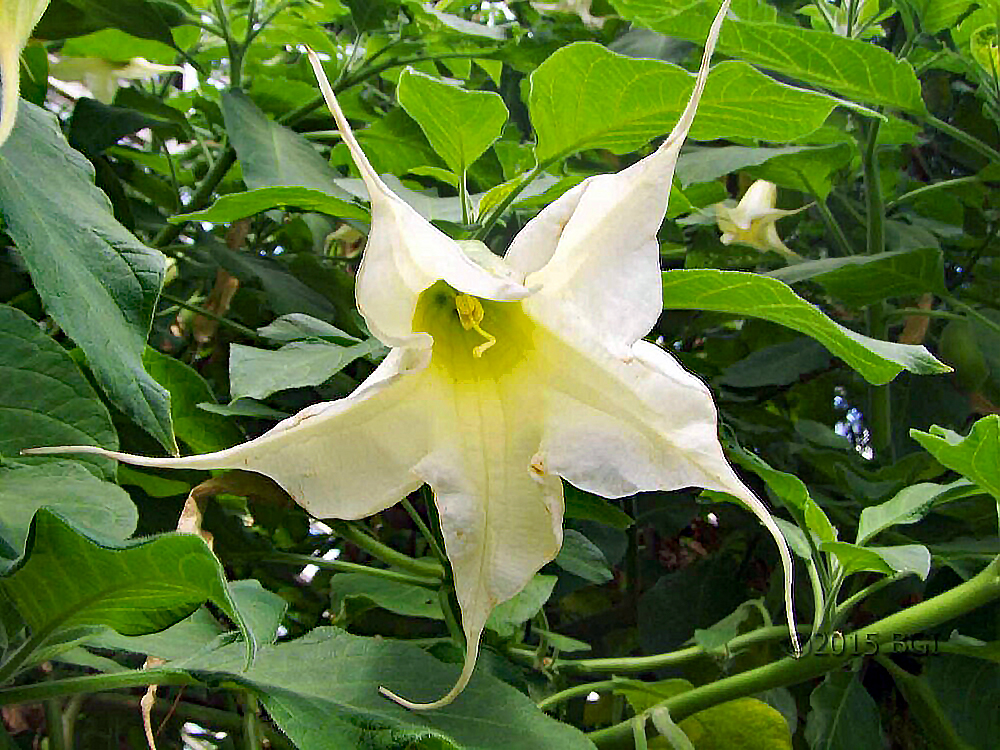
Pong-pong Tree
Cerbera
The Pong-pong Tree is found throughout the ASEAN region. The tall evergreen has been utilised by native groups in the region in an assortment of ways. The wood was used to produce charcoal, used to make gunpowder by the Thais. Oil pressed from the seeds was used to fuel lamps. The plant oil also had medicinal uses including treating itches, rheumatism, the common cold, it also worked as an insect repellent.
Now, the part we’re all here for is found in the seeds.
The seeds of the fruit are extremely toxic, to the point that the tree is sometimes referred to as the suicide tree. The killer compound in the seed is called cerberin. This is a digoxin-type cardenolide and cardiac glycoside toxin that blocks the calcium ion channels in heart muscle. This causes a disruption to the heart beat, often to the point where it becomes fatal.
The cerberin is also difficult to find during autopsies, the taste is also quite easily masked. This makes cerberin poisoning a common means of death in many murder, and suicide cases. The state of Kerala, India even recorded over 500 cerberin related deaths between 1989 – 1999.


Be the first to comment